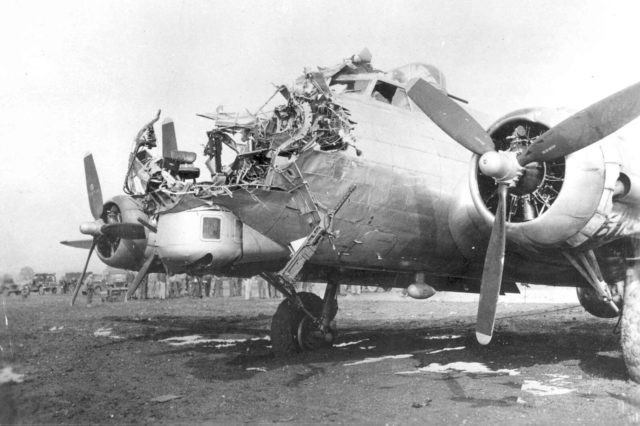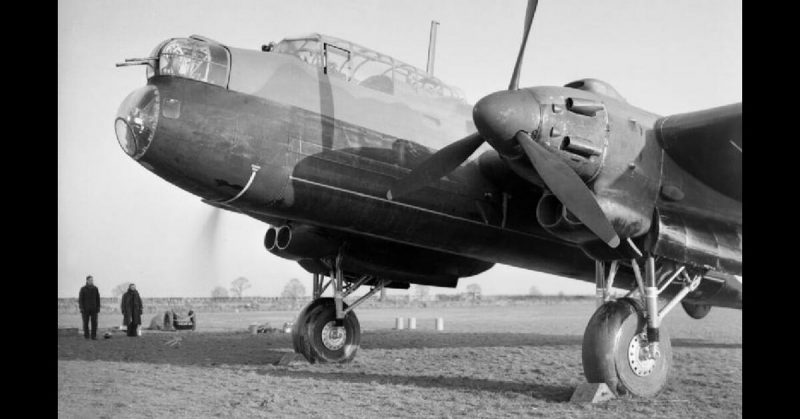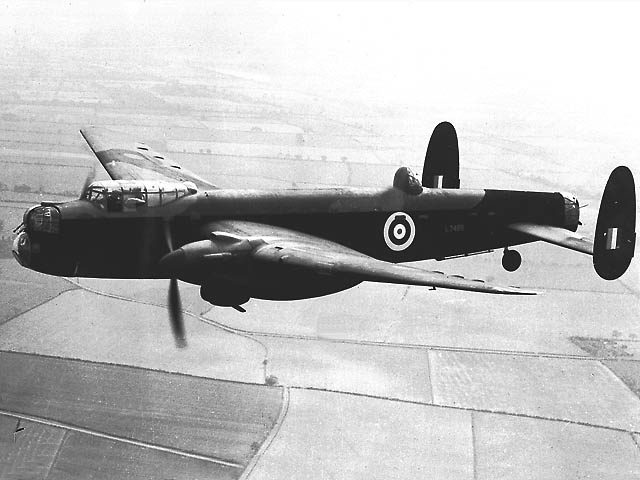On the night of May 30, 1942, Britain launched its largest bombing raid so far in World War Two. Of the 1,047 bombers that flew, 41 were lost. On one of those bombers, the pilot’s bravery saved the lives of the crew on board.
A Young and Promising Pilot
Leslie Manser was born in New Delhi in 1921. His father was an engineer working in the Post and Telegraph Department in colonial India. The family returned to England while Leslie was still young and it was there he received his education.
As the Second World War menaced Britain, Manser tried to sign up for both the army and the navy. It was the Royal Air Force (RAF) that eventually accepted him. He began pilot training in August 1940, became an officer in May 1941, and then finished his operational and navigational training.
A gifted pilot, Manser did well in the RAF. His skills were spotted, and he spent time as an instructor with an RAF training unit. In April 1942, he returned to 50 Squadron, his original bomber group. He continued to prove his skills as a commander as well as a pilot and was promoted to flying officer on May 6.
The Manchester Bomber
In 50 Squadron, Manser was given the task of flying a Manchester bomber. It was not a pleasant prospect.
In the build-up to the Second World War, Britain lacked bombs and planes large enough to do the sort of destruction the RAF hoped. Experiments were undertaken with new bombers, and the Manchester was one of the results.
Powered by a pair of Rolls-Royce Vulture engines and built around an enormous bomb bay, the Manchester held great promise. However, its power output was much less than expected and there were problems with the lubrication. The original order for 1,200 Manchesters was canceled after 200 had been produced.
Operation Millennium
In the spring of 1942, British bombing of German cities was organized by Bomber Command under its new leader, Air Marshall Sir Arthur “Bomber” Harris.
Harris, like most of the RAF command, believed in the war-winning potential of bombing on a massive scale. However, reconnaissance had shown that bombing had so far been massively inefficient, with 90% of bombs missing their targets by miles. After years of denial over the growing evidence, Bomber Command finally conceded that something had to change.
Harris came up with a solution; Operation Millennium, the first thousand bomber raid. By attacking with a huge number of planes all at once, the RAF would overwhelm German air defenses and cause severe damage with a massive attack on a single target.
To achieve this, the RAF had to pull in every plane and pilot it could. Trainee pilots and barely functional aircraft were included for the big display of power.
Bombing Cologne
Less than 12 hours before setting out, the pilots of Operation Millennium were advised of a change of plan. Weather conditions meant they would be attacking Cologne, Germany’s third largest city, instead of the port of Hamburg.
The operation relied on formations of planes flying at specific heights. From the start, Manser and his crew faced problems with this. The plane they had been given, Manchester L7301, was unreliable and in poor condition. After setting out at 2250 on May 30, they found they could not reach the altitude they had been told to fly at.
They pressed on, approaching Cologne at 0130 on May 31. Flying at only 7,000 feet, they were caught in the beam of a searchlight. Manser kept them flying straight to hit their target. Despite being hit by anti-aircraft fire, they reached their aiming point and dropped their load of over a thousand bombs.

Hit and Heading Home
As they turned for home, L7301 was hit again. They descended to 800 feet to avoid searchlights and anti-aircraft guns. This put them in the range of 20mm gunfire from the ground. They were hit again.
Flying northwest, they got out of immediate danger. Shrapnel had wounded the rear gunner, but the rest of the seven-man crew were fine.
The plane was another matter. The structural damage had made it hard to fly. As it gained height, the port engine burst into flames.
The fire was put out, but now the plane was running on just one engine, and that one was straining to the point of exploding.
Piloting a Doomed Plane
L7301 was doomed, but Manser was determined his comrades should not join it. As they lost altitude, he slowed the plane to 110 knots, perilously close to the speed at which it would stall.
The rest of the crew grabbed parachutes and prepared to bail out. Manser refused to join them. The minute he let go of the controls, the plane would enter a nose dive. They were already only just above the treetops. He needed to keep them in the air while the others escaped.
The last man jumped just in time for his parachute to open and land him safely. Looking around, he saw the bomber crash and burst into flames.
Lives Saved
Manser had saved six lives through his sacrifice. His plane crashed in Nazi-occupied Belgium, leaving his crewmates scattered in its wake. One was captured and spent the rest of the war in a German prison camp. Friendly Belgians found the other five. Smuggled out at great risk through France and Spain, they returned to Britain and the war.
For his sacrifice, courage, and determination, Leslie Manser was awarded a posthumous Victoria Cross. Flying a plane that barely deserved the name, he had fulfilled his mission and saved the lives of his crew.
Source:
Ralph Bennett (1999), Behind the Battle: Intelligence in the War with Germany 1939-1945.
Gordon Brown (2008), Wartime Courage.

